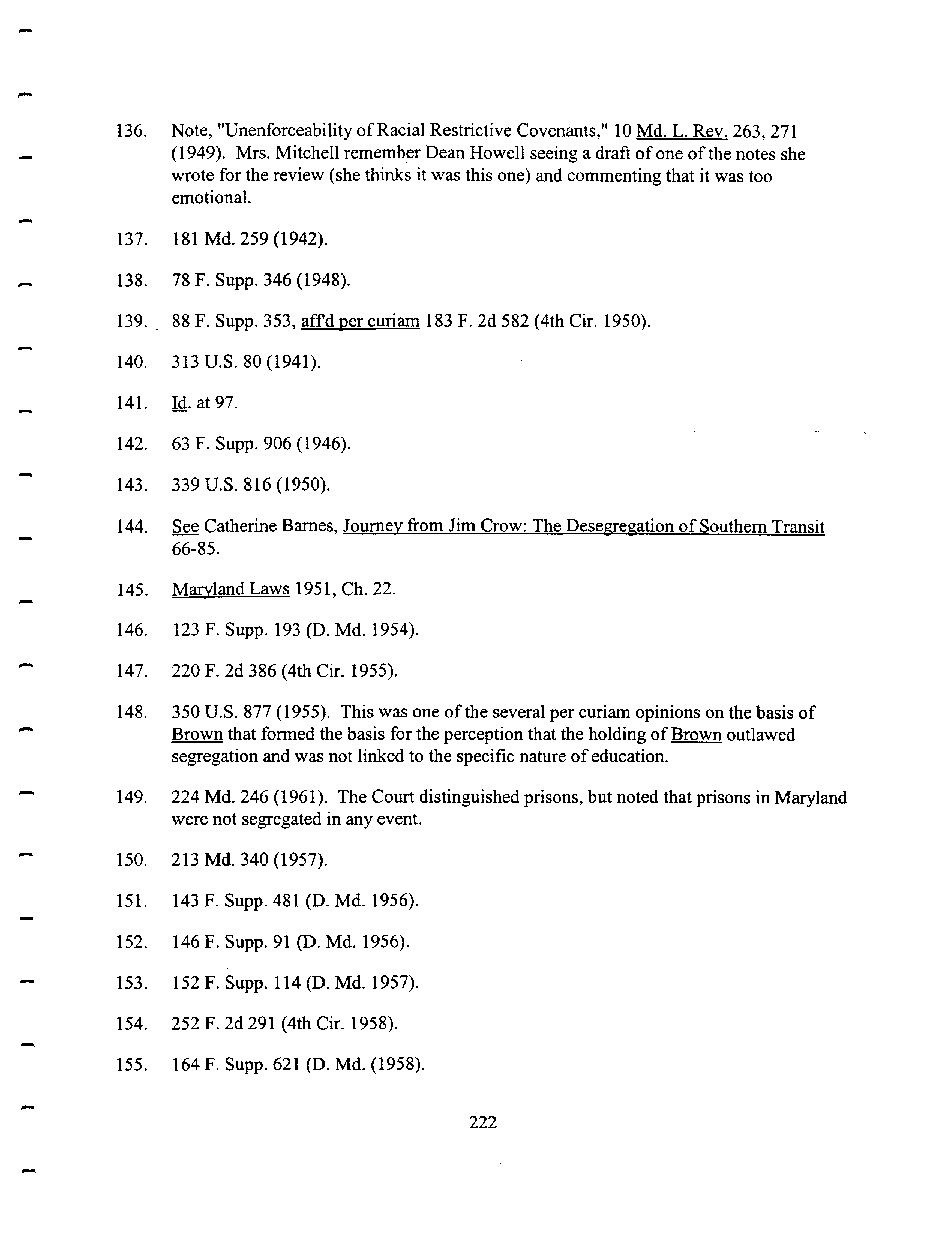|
136. Note, "Unenforceability of Racial Restrictive Covenants," 10 Md. L. Rev. 263, 271
(1949). Mrs. Mitchell remember Dean Howell seeing a draft of one of the notes she
wrote for the review (she thinks it was this one) and commenting that it was too
emotional.
137. 181 Md. 259 (1942).
138. 78 F. Supp. 346 (1948).
139. . 88 F. Supp. 353, affd per curiam 183 F. 2d 582 (4th Cir. 1950).
140. 313 U.S. 80(1941).
141. Id. at 97.
142. 63 F. Supp. 906(1946).
143. 339 U.S. 816(1950).
144. See Catherine Bames, Journey from Jim Crow: The Desegregation of Southern Transit
66-85.
145. Maryland Laws 1951. Ch. 22.
146. 123 F. Supp. 193 (D. Md. 1954).
147. 220 F. 2d 386 (4th Cir. 1955).
148. 350 U.S. 877 (1955). This was one of the several per curiam opinions on the basis of
Brown that formed the basis for the perception that the holding of Brown outlawed
segregation and was not linked to the specific nature of education.
149. 224 Md. 246 (1961). The Court distinguished prisons, but noted that prisons in Maryland
were not segregated in any event.
150. 213 Md. 340 (1957).
151. 143 F. Supp. 481 (D. Md. 1956).
152. 146 F. Supp. 91 (D. Md. 1956).
153. 152 F. Supp. 114 (D. Md. 1957).
154. 252 F. 2d 291 (4th Cir. 1958).
155. 164F. Supp. 621 (D. Md. (1958).
222
�
|

